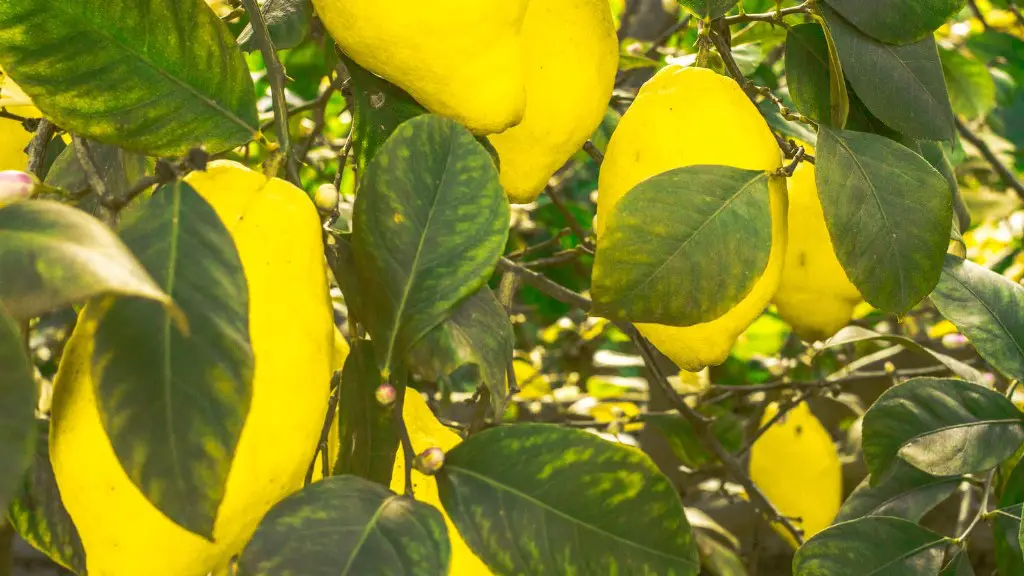What is a Coconut Palm Tree?
A coconut palm tree is a tropical species native to the coastal regions of Asia and the Pacific. It is most known for its coconuts, which are edible fruits when ripe. Coconut palms can produce fruit after around 4 years and can live for up to 80 years if taken care of properly. These trees can be grown both indoors and outdoors, but they are commonly found in coastal regions of tropical countries. They require a lot of sun and moisture, so they are best suited to warm, humid climates.
Cultural Significance
Coconut palm trees are especially significant in many cultures around the world, given their vast uses and versatile nature. In India and the Philippines, coconut trees are an important part of both the landscape and the cuisine and culture. In the Philippines, coconut trees are often planted in the yards of family homes and carry symbolic meanings of strength and good luck. Coconut based recipes are popular in many tropical countries and have even gained popularity in Western countries in recent years.
Uses and Benefits
The uses and benefits of a coconut palm tree are far-reaching. Coconuts are a source of food, water, and many other products. The leaves of a coconut tree can be used to make mats, tablecloths, fans, and other decorative items. Coconut oil is a popular cooking oil and can also be used for skin care, hair care, and medicinal purposes. Coconut water is a refreshing and nutritious beverage, containing many vitamins and minerals.
Environmental Impact
As opposed to other commercially cultivated crops, such as soybeans or corn, the impact of a coconut palm tree on the environment is quite minimal. Coconut palms are highly resistant to pests and plant diseases, allowing them to be grown without much intervention from agriculturists. Coconut palms can also be grown organically, with no synthetic chemicals or pesticides used. Additionally, coconut palms can help provide habitats for other species, such as birds and butterflies.
Care and Maintenance
Due to their long life span and numerous benefits, coconut palm trees can be a great addition to any garden. However, they do require regular maintenance and care. Coconut tree care should include fertilizing, irrigating, pruning, and controlling pests and diseases. Coconut palms should also be protected from cold temperatures, as they are tropical plants and are sensitive to extremely cold temperatures.
Harvesting Coconuts
When harvesting coconuts, it is important to ensure that the fruits are ripe. Depending on the species and cultivar, this may take anywhere from 6 to 12 months. A good way to tell if a coconut is ripe is to give it a shake and listen for the sound of the liquid inside – the more liquid, the riper the coconut. If a coconut is too young, it will be green and have an unappetizing texture. Coconuts can be harvested by hand or with machines.
Regeneration
Coconut palms produce new coconuts throughout their lives, allowing these majestic trees to remain alive and produce fruit for generations. In addition, the rate of regeneration is quite high, with some species able to produce up to 150 coconuts per tree each year. As a result, the coconut palm tree is a sustainable crop and a great addition to any garden or farm.
Types of Coconut Palm Trees
There are several species and cultivars of coconut palm trees, each with its own unique characteristics. Some popular species include the Malayan Coconut, the Red Coconut, and the Green Coconut. The Malayan Coconut is a hardy species that can be grown in a variety of climates. The red coconut is smaller in size and produces sweeter coconuts than the other varieties. The green coconut has a milder taste and a longer shelf life than other species.
Consumer Industry
The coconut palm tree industry is a major contributor to many economies around the world. Coconut products, such as oil, milk, and water, are popular ingredients in many commercial products and can be found in grocery stores, supermarkets, and specialty shops. In addition, coconut milk is a popular dairy alternative and can be used in recipes for people with lactose intolerances.
Nutritional Benefits
Aside from its cultural significance and the many uses it has, a coconut palm tree also has many nutritional benefits. The fruit of a coconut tree is rich in fiber, vitamins, and minerals. Coconut milk and oil are both rich sources of healthy fats and medium-chain triglycerides. Coconuts also contain lauric acid, an antimicrobial compound that can help boost the immune system.
Landscaping
In addition to its nutritional benefits, coconut palms can also add visual interest to the landscape. They are very attractive trees and can provide shade, privacy, and a tropical look to any outdoor space. Coconut palms can also provide food for birds, insects, and other wildlife. Growing coconut trees can be a great way to make a garden or outdoor area more inviting and enjoyable.
Caring for Coconut Palm Trees
Caring for a coconut palm tree requires attention to detail, as the trees can be quite delicate. Coconut trees should be watered deeply and frequently. Additionally, it is important to fertilize the trees regularly to ensure they take in enough nutrients. Pruning and pest control are also important for maintaining a healthy coconut palm tree.
Costs and Availability
Coconuts and coconut-based products are widely available in many countries around the world. The cost of a coconut palm tree will depend on the size and species of the tree, and they can range from a few hundred dollars to a few thousand. Coconut seeds are also available and can be grown at home. However, it is important to ensure that the seeds are planted and cared for properly.
Conclusion
Coconut palm trees are a versatile and resilient species that can offer numerous benefits and uses. From providing a source of food and drink to adding visual interest to the landscape, coconut palm trees can be a great addition to any yard and home. In addition, coconut products are widely available and can be integrated into many different lifestyles and diets.


